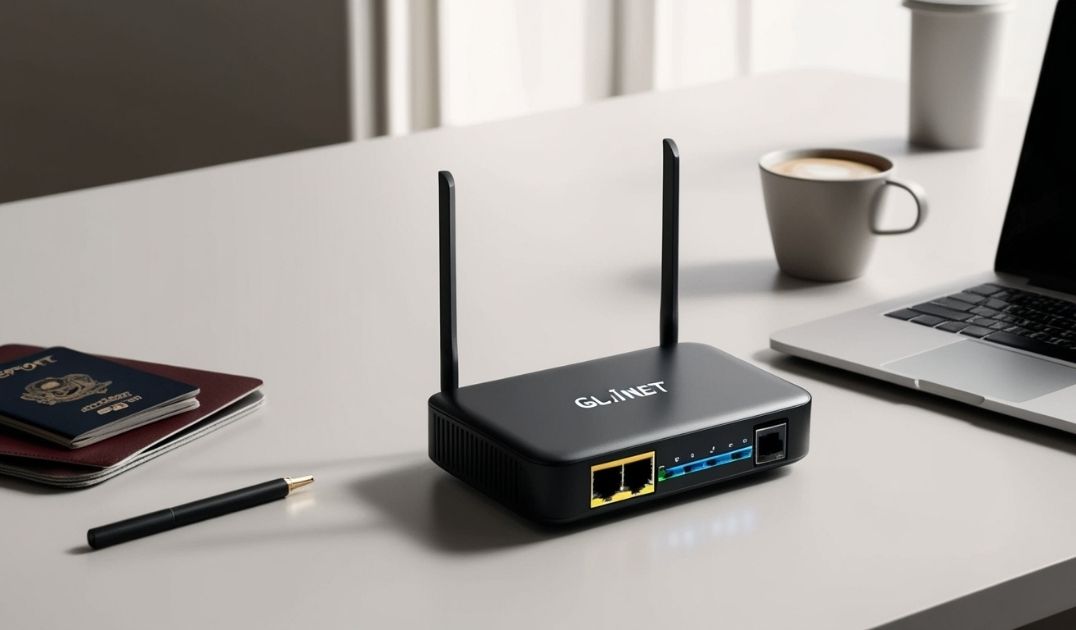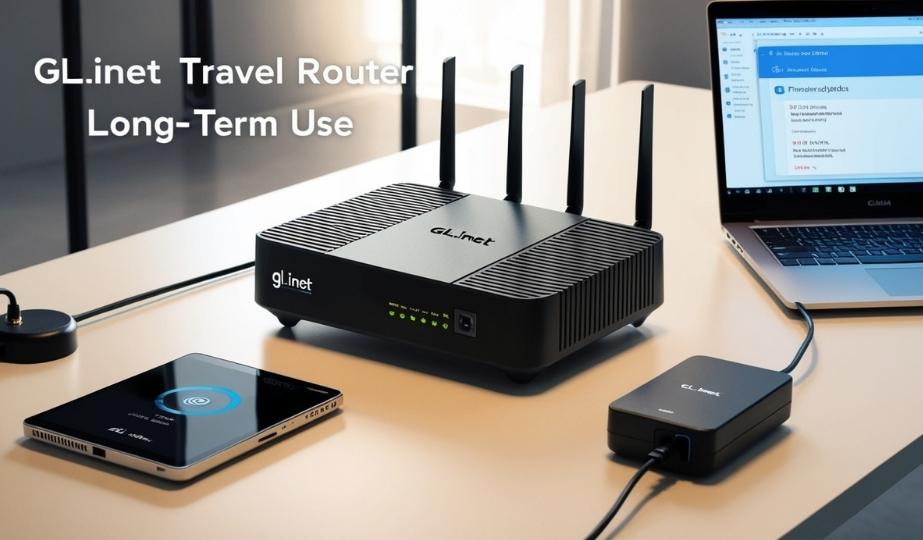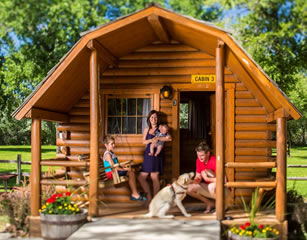Can I run my GL.iNet travel router continuously for 365 days? As someone who’s often on the go, staying connected 24/7 is a must for me. I rely on the GL.iNet travel router for its portability and secure connection, making it my go-to for consistent internet access wherever I am. But running it non-stop raises some important questions.
I needed to understand the best setup, potential challenges, and maintenance tips to keep it working smoothly over the long haul.
Here, I’ll walk you through everything I’ve learned from finding reliable power sources to enhancing security so we can both keep our GL.iNet routers running seamlessly year-round.
Key Takeaways
- A GL.iNet travel router can run continuously for extended periods with proper setup and maintenance.
- Stable power supply is essential to prevent interruptions and maintain a reliable connection.
- Regular firmware updates are necessary for optimal performance and security.
- Overheating prevention is crucial, especially for long-term, non-stop operation.
- Use of VPN on public networks with the router ensures safe, secure browsing wherever you go.
Why Run a Travel Router Non-Stop?
Running a travel router like the GL.iNet continuously can be a game-changer, especially if you’re someone who depends on a stable internet connection at all times. Here’s why keeping it on 24/7 is valuable:
- Reliable Connectivity for Multiple Devices: If you’re traveling with family, colleagues, or even multiple devices, a travel router provides consistent connectivity. No more juggling connections or dealing with network drops; the router keeps everyone online smoothly.
- Securing Public Wi-Fi Connections: Public Wi-Fi can be risky, exposing your data to potential threats. GL.iNet routers offer VPN support, which encrypts your internet activity, keeping sensitive information secure even on public networks like those in cafes, airports, and hotels.
- Accessing Private Networks from Anywhere: If you need to connect to your home or office network remotely, a travel router makes this easy. By setting it up to connect securely to your private network, you’ll have access to your files, printers, or even remote desktop—no matter where you are.
The GL.iNet Travel Router: Key Features
GL.iNet routers are specifically designed for portability and reliable internet access. Key features include:
- VPN support for secure internet usage on public networks
- Multiple device connectivity
- User-friendly interface for quick configuration and setup
- Compact design for easy portability
Key Features of GL.iNet Travel Routers
| Feature | Benefit |
|---|---|
| VPN Support | Secure internet on public Wi-Fi |
| Multiple Device Support | Connect several devices at once |
| Compact Design | Easy to carry, fits in a bag or pocket |
| User-Friendly Interface | Quick setup, ideal for non-tech users |
Setting Up for Long-Term Use
If you plan to run your GL.iNet travel router continuously, having a solid setup from the beginning will help maintain a stable, efficient connection. Here’s a detailed guide to ensure your router is ready for long-term use, covering power, placement, and firmware updates.
1. Choose a Reliable Power Source
A stable power supply is essential for uninterrupted, continuous use. Choosing the right power option prevents unexpected shutdowns and keeps your router working efficiently.
- Direct Power Outlet: This is the best option for consistent power. Plugging the router directly into an outlet provides the most stable and uninterrupted connection.
- USB Power: You can power the router with a USB connection, but ensure it’s a reliable source like a wall charger or laptop. Avoid powering from low-quality sources, as they may cause disconnections.
- Power Bank: A high-capacity power bank can be a great alternative, especially when on the move. Look for power banks with at least 10,000mAh capacity to keep your router running for extended periods.
Power Source Comparison
| Power Source | Stability | Portability | Ideal for Long-Term Use? |
|---|---|---|---|
| Direct Power Outlet | Very stable | Low | Yes |
| USB Connection | Moderately stable | Moderate | Yes, with quality source |
| Power Bank | Stable (depends) | High | Yes, with high capacity |
2. Position the Router in a Ventilated Space
Overheating can impact the router’s performance, especially when running non-stop. Proper placement ensures the router stays cool, which in turn helps it perform better over the long term.
- Open, Ventilated Areas: Position the router in an area with good airflow. Avoid placing it in enclosed or cramped spaces, like drawers or behind other electronics, as these can trap heat.
- Keep Away from Other Heat Sources: Place the router away from direct sunlight, heaters, or other devices that produce heat. Heat buildup can lead to performance issues or even hardware damage over time.
- Elevated Position: For best ventilation, place the router on an elevated surface rather than directly on carpets or other soft surfaces that may block airflow.
3. Secure Firmware Updates for Optimal Performance
Firmware updates are essential for maintaining both the security and functionality of your router. These updates improve performance, fix bugs, and protect against vulnerabilities, ensuring your router runs smoothly over extended use.
- Regularly Check for Updates: GL.iNet regularly releases updates to improve router stability and security. Set reminders to check for updates every few months.
- Automatic Update Settings: If available, enable automatic firmware updates. This way, you won’t have to worry about missing important security or performance improvements.
- Follow Update Instructions Carefully: Make sure you follow the router’s instructions when updating the firmware, as improperly installed updates can cause connectivity issues.
Firmware Update Checklist
| Update Task | Frequency | Importance |
|---|---|---|
| Check for Firmware Updates | Every 2-3 months | High (for security and performance) |
| Enable Automatic Updates | One-time setup | Optional, but recommended |
| Follow Update Instructions | During updates | Essential for stability |
Setup Tips
By following these setup steps, you’ll be able to enjoy a long-term, uninterrupted connection with your GL.iNet router:
- Power Source: Choose a stable power source like a wall outlet or high-quality power bank.
- Ventilation: Place your router in a cool, open area away from heat sources.
- Firmware: Keep the firmware updated to improve performance and security.
Stable Power: Essential for Continuous Operation
A stable power source is essential to avoid disconnections and power interruptions. Here are a few power supply options that support long-term use:
- Direct power outlet: Most stable option.
- USB power bank: Good for mobile use but needs regular recharging.
- Portable battery packs: Ideal for continuous connectivity on the go.
Pro Tip: Use a surge protector to avoid power surges that can damage the router.
Preventing Overheating for Extended Use
Routers running continuously can build up heat over time, especially if they’re placed in cramped or poorly ventilated areas. Here are some tips to keep your router cool:
- Position the router in an open, ventilated area.
- Avoid covering the router with any material or placing it on heat-generating surfaces.
- Opt for cooling pads if you’re in a warm environment.
Firmware Updates for Security and Stability
Updating your router’s firmware is essential to:
- Improve security against vulnerabilities.
- Enhance connectivity and speed.
- Fix bugs for a smoother experience.
Firmware updates often come with performance improvements that can help the router manage prolonged use. Check for updates every few months to ensure your router is protected and running smoothly.
Rebooting: When and Why
The GL.iNet router is designed to run smoothly for long periods, but like any device, it benefits from a periodic reboot. Rebooting helps maintain performance, keep the connection stable, and ensure the router operates at its best. Here’s why and when you should consider a reboot.
Why Rebooting Matters
- Clear Out Cache
Over time, the router builds up cache data, which can slow down performance. Rebooting the router clears out this temporary data, freeing up memory and helping the router run more efficiently. Think of it as giving your device a fresh start. - Reset the Connection
Occasionally, the internet connection may become sluggish due to minor connectivity issues or interference. A quick reboot can reset the connection, stabilizing it and restoring your original internet speed. This can be especially helpful if you notice slower speeds or intermittent drops. - Refresh the Router’s Internal System
Constant, long-term operation can put stress on the router’s internal components. Rebooting gives these components a chance to reset and cool down, reducing strain and potentially prolonging the device’s lifespan. A regular reboot routine is like preventative maintenance, helping the router last longer without issues.
Suggested Reboot Schedule
For optimal performance, especially in high-use situations, follow a regular reboot schedule:
- Every 1–2 Weeks
Rebooting the router every 1–2 weeks is a good rule of thumb, particularly if the router is in continuous use. This frequency keeps the connection stable and prevents buildup that might affect performance. - In Case of Performance Issues
If you notice a drop in speed or connection stability, a reboot can often resolve these issues. This can serve as a quick troubleshooting step before making any other adjustments.
Quick Tip: You can schedule automatic reboots on some routers. Check the settings in your GL.iNet router’s interface to see if this feature is available, allowing you to set and forget regular reboots.
VPN Support for Public Wi-Fi
A major benefit of GL.iNet routers is their VPN support, which helps keep your data secure, especially on public Wi-Fi networks in airports, cafes, or hotels. Here’s how VPN helps:
- Encrypts your data so it remains secure.
- Hides your IP address, improving privacy.
- Prevents data tracking by third parties on public networks.
Multi-Device Connectivity
The GL.iNet router supports multiple devices, making it ideal for families or groups traveling together. Here are tips for connecting multiple devices effectively:
- Avoid overloading the router; 5–8 devices are typically manageable.
- Use 5 GHz band for faster speeds if supported by your router model.
- Disconnect unused devices to maintain strong performance.
Maximizing Lifespan Through Maintenance
Maintaining your router can extend its life, especially with continuous use. Here’s a quick checklist for basic maintenance:
- Keep the router clean and free from dust.
- Check cables regularly to ensure no loose connections.
- Inspect the power source for stability and quality.
- Monitor temperature and adjust the position if overheating is noticed.
Maintenance Tips for Continuous Router Operation
| Maintenance Task | Frequency | Purpose |
|---|---|---|
| Clean router and vents | Monthly | Prevent dust buildup, reduce overheating |
| Check cables and connections | Every 2 weeks | Ensure stable power and connectivity |
| Inspect power source | Monthly | Maintain continuous power flow |
| Reboot router | Every 1–2 weeks | Improve stability and performance |
Alternative Power Supply Options
Long-term users may benefit from alternative power sources. Here’s a look at some options:
- Power banks: Ideal for mobile, continuous use but need regular recharging.
- Solar-powered setups: Great for eco-friendly options, ideal for outdoor use.
- Portable battery packs: Reliable for camping trips or remote areas.
24/7 Operation: Suitability and Durability
GL.iNet routers are generally suited for 24/7 operation due to their durable design. However, continuous operation may strain hardware over time, so it’s best to:
- Monitor performance regularly.
- Ensure adequate ventilation to prevent damage from heat.
- Power down periodically if the router is not in use.
Benefits for Digital Nomads and Frequent Travelers
For digital nomads and frequent travelers, the ability to stay connected wherever you go is essential, and a reliable travel router like the GL.iNet can make a big difference. Here’s how continuous connectivity with the GL.iNet router benefits those who are always on the move:
Reliable Internet Access Anywhere, Anytime
Whether you’re working from a beachside cafe, a coworking space, or a hotel room, having a personal router provides a stable and consistent connection. Public Wi-Fi can be unreliable, especially in busy locations, but with your own router, you can enjoy steady internet access anytime, anywhere. This means fewer interruptions and a more dependable internet experience, no matter where you are.
Secure Connections on Public Networks
Using public Wi-Fi poses security risks, as these networks are often targets for hackers and data thieves. The GL.iNet router’s built-in VPN support offers a layer of security by encrypting your data and protecting your privacy. This way, you can confidently check emails, handle sensitive work, or do online banking without worrying about your information being exposed.
Multiple Device Connections
Traveling with friends, family, or colleagues? The GL.iNet router allows multiple devices to connect simultaneously, which makes it an ideal solution for group travel. Everyone can stay connected without sacrificing speed or reliability, and you don’t have to worry about bandwidth limitations. This multi-device support is perfect for families who want to stay connected, share photos, or stream shows together.
Benefits of GL.iNet Router for Travelers
| Feature | Benefit |
|---|---|
| 24/7 Connectivity | Reliable internet access anytime |
| VPN Support | Enhanced security on public Wi-Fi |
| Multi-Device Support | Ideal for family or group travel |
| Portable Design | Easy to carry and set up on the go |
FAQs
Can I leave my Wi-Fi router on all the time?
Yes, GL.iNet routers are designed for extended use, but routine maintenance is suggested.
How many devices can connect to a GL.iNet router?
It can handle around 5–8 devices comfortably, depending on the model.
Does using a VPN slow down the internet?
VPNs can slightly reduce speed due to encryption, but it’s generally negligible with a good VPN provider.
My Opinion
In my view, running a GL.iNet router continuously for 365 days is not just possible—it’s a practical choice for anyone needing reliable, secure internet access. With a good setup, a stable power source, regular updates, and occasional maintenance, I’ve found that this router provides uninterrupted connectivity wherever I go. It’s an ideal solution for travelers, remote workers, and digital nomads like me who depend on a continuous, secure connection to stay productive and connected on the road.








